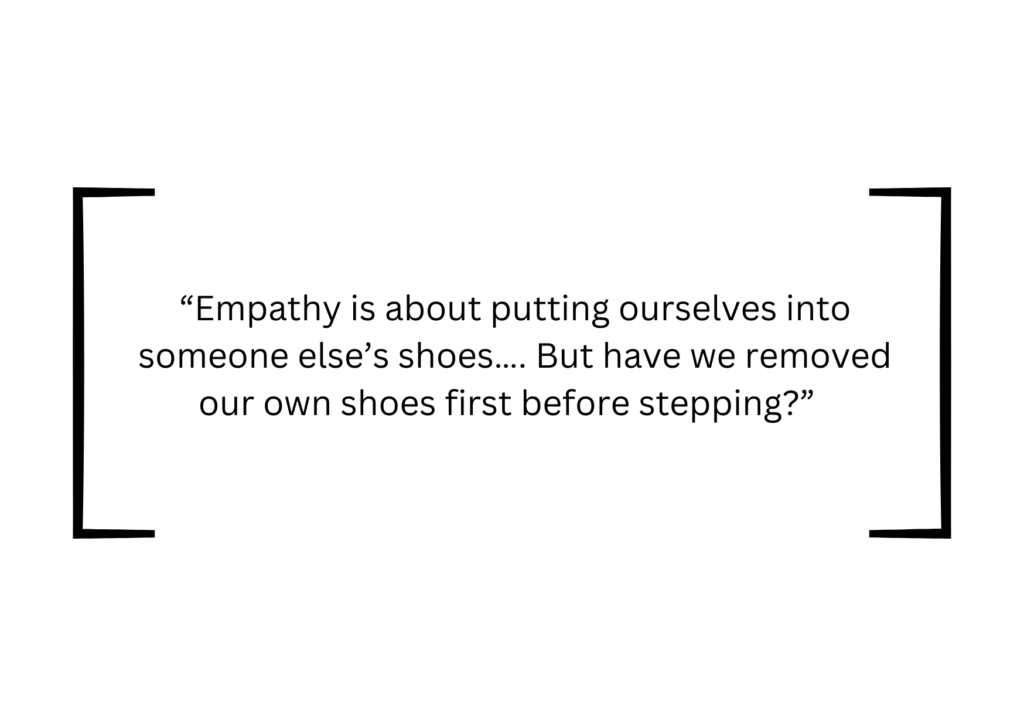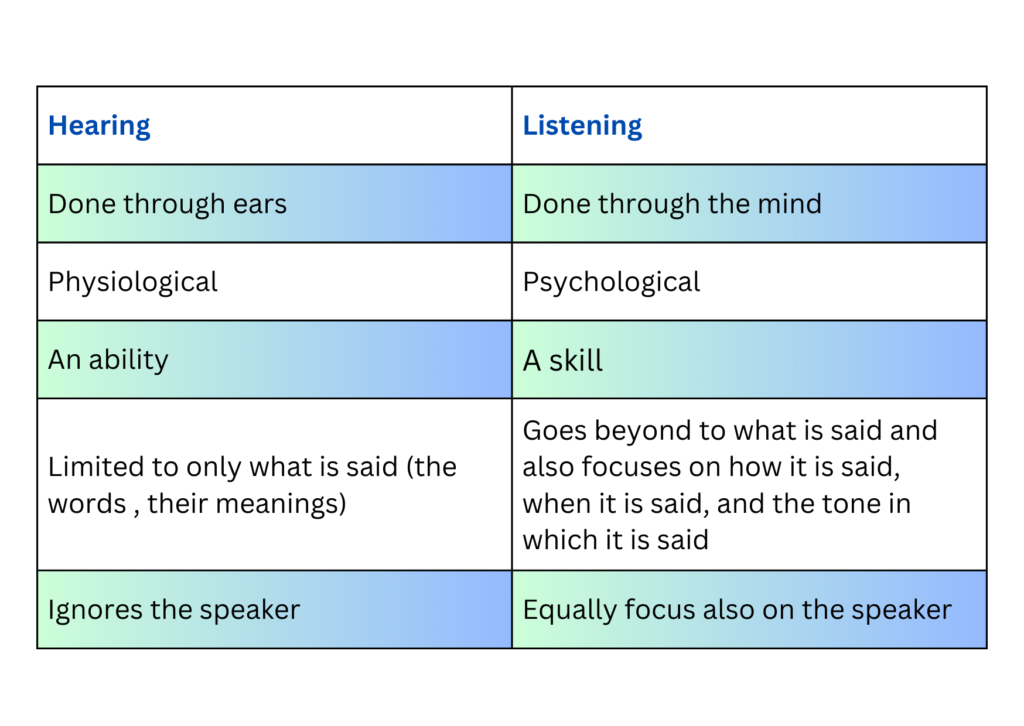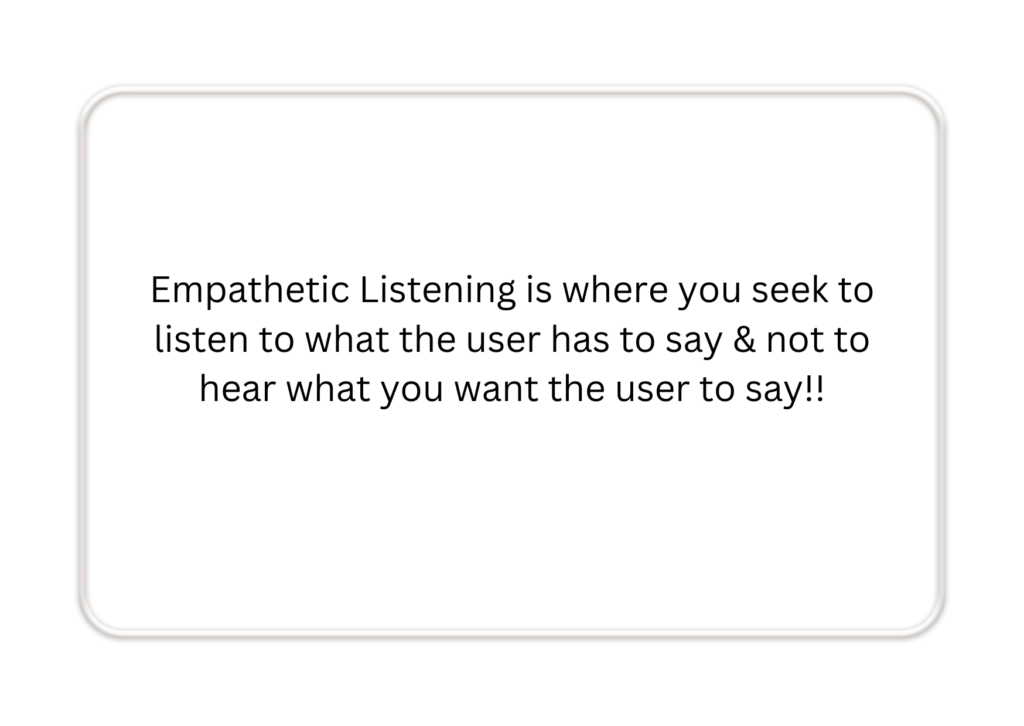Table of Contents
In the anatomy of human body, the jugular vein is one of the most important veins since it connects the brain with the heart and enables the movement of blood. Any small damage or compression to it results in fatality. Importantly, the three sub-veins of jugular vein help in diagnosing different medical conditions. In a typical Design Thinking journey, we believe Empathy also plays a similar role in diagnosing the correct problem, unearth unstated needs and act as the foundation of the problem-solving process.
Why Empathy is important in Design Thinking

The metaphorical “own shoes” refer to the judgments, biases and pre-conceived notions we carry with ourselves while we try to solve problems. Real empathy is unlearning about your customers /users / people who face the problem and then re-learning about them. Many real industrial innovations (not frugal innovation / jugaad) have been possible because the innovators (read problem solvers) took a fresh perspective not only about the problem but also about the people who were facing the problem. For illustration, in this detailed blog on Empathy, Bank of America designed one of the most disruptive banking campaigns ‘Keep the Change’ simply by observing the behavior of people when it comes to managing change (cents / paise). The campaign changed the banking landscape when it came to transactions via debit & credit cards. Observation helped them to garner consumer insights.
Similarly, Design Thinking is not only about the problem but more importantly about the people who face the problem. This Empathy goes beyond data, statistics and numbers & deals with emotions, experiences and feelings/behaviour.
In our philosophy, Design Thinking is a
human-centric future focused approach to solve problems & when we say human-centricity,
empathy becomes key.
Seeking LORD’s blessings for Empathy
Unlocking empathy is not rocket science & doesn’t need a huge Divine intervention (if you interpreted LORD in any other way) but a simple honest implementation of following 4 things. These 4 things will enable a rush of user-centric insights that can crack the puzzle surrounding the problem(s), which the problem solvers wish to unravel –
1. Listening (L) – “Between what is said and not meant, And what is meant and not said, Most love is lost”. – Kahlil Gibran
In our urgency to solve problems and jump to solutions, we don’t listen, but we hear. There is a vast difference between Listening and Hearing.

In the parlance of Design Thinking, Listening should actually become Empathetic Listening. In our understanding of Design Mindset transformation journey, being an active listener is one of the fundamental qualities of a Design Thinker along with few other key traits.

- Observation (O) – Just like people hear instead of listening, most of us see but not observe. Seeing is merely witnessing anything, but observation involves both a mental effort from the observer to identify any pattern OR an anti-pattern, the facial expressions of people he/she is observing, their gesticulations, their cultural OR any ethnographic exhibitions and a lot of other things….
Do you recollect the following scene from 2003 Hollywood thriller Runaway Jury?? The protagonist Rankin Fitch played by Gene Hackman observes several minute things about the taxi-driver in less than a minute’s duration scene in the taxi. His observation ranges from the driver being a devout Christian, identifies that driver’s mother is ill & the driver aims to take care of her but his wife isn’t so happy with this.

Smartphone making companies observed that people needed to carry multiple things a camera (to take photos), an MP3 player (to hear songs), a diary (to take notes), a calculator (to do some calculations), a contact book (to save contacts), a map may be (for understanding routes) and importantly a phone to make a call. A smart phone was like all these functionalities packed in one single device. They observed and empathized with the pain to carry all the above items & the first smart-phone changed the landscape of the mobile and telecom industry.
3.Reading (R) – While Listening and Observing is important from the Primary research point of view, Reading is equally important from a secondary research point of view. Reading quality journals, authentic research reports published by top-notch consulting organizations, perusing content from reliable sources etc. all complement in gaining additional insights.
Even as simple as going through the social media handle of someone, can give a lot of insights about that person’s areas of interests, his thoughts and viewpoints based on the kind of posts liked, reposted etc.
4.Dialogue (D) – We often use the words Dialogue and Discussion inter-changeably. But if we were to dissect into the anatomy of both the words, an interesting inference emanates.
The word Discussion originates from the word “cussion” (it means something like a force that shakes), whereas the word Dialogue comprises of two words – Dia (Meaning Two) followed by Logue (meaning discourse / engagement).
In Design Thinking, it is advised to have Dialogue with the users. In dialogue, our mindset focuses on “What is right and not who is right!” If we focus on what is right instead of who is right, we tend to improvise ourselves, demonstrate the ability to listen to our users (even though we are wrong), introspect, after taking inputs even from conflicting viewpoints. So, developing a dialogue with someone is also one of the skills for which mindset has to be transformed.
We would request you to go through this short video from noted Design Thinking practitioner and our Founder Arun Jain on why Dialogue supersedes Discussion when it comes to Design Thinking.
To summarize, the LORD Framework forms the basis of Empathy when it comes to Design Thinking.
Before we conclude, lets understand this classical case study of Design Thinking – “Embrace Warmer – Design For Affordability”. The case shows how the team of students saw things differently (beyond the obvious) thus saving hundreds of babies.
The challenge was designing a low cost simple incubator because most of the deaths of pre-mature babies were happening in emerging economies where cost of leveraging incubators was unaffordable along with difficulties in operating and maintaining them. But the Embrace Team decided to keep the given problem statement away and instead focus on understanding the on-ground situation by visiting hospitals, interacting with families, health-care experts, travel extensively to assess what is happening. And that is where they came across two insights viz. Most infants were born in rural areas & many of them would never make it to hospital (to use incubators). So, the solution was not in the hospital but outside of it. And importantly, was an incubator really needed then?
So, they designed a bag which can be wrapped around the baby, a PCM pouch (phase-change material, which kept the baby’s body at exactly the right temperature for few hours) which can be “recharged” periodically using usual boiling water for few minutes.
What started as designing a low cost incubator turned out into a simple bag of few dollars which is inexpensive, works without electricity, portable, intuitive and importantly easy to operate. This was possible because they approached the problem with a different perspective, since they received plenty of insights simply by listening, dialogue and observation.
And that’s the magic of Empathy!!


